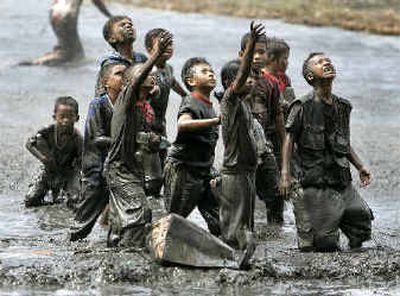Higher toll among children feared

BANDA ACEH, Indonesia – Relief workers are finding fewer children in camps for tsunami refugees than they’d hoped and fear that children make up an even greater percentage of the dead than was estimated earlier.
“You just don’t see the little kids in the camps: babies, infants and toddlers,” said Christine Knudsen, a senior officer for Save the Children, a nonprofit worldwide advocacy and relief group. “Let’s hope we’re wrong. But that’s the trend right now.”
Hard numbers are difficult to come by. Relief workers originally estimated that children made up 3 of every 10 people killed when an earthquake triggered a tsunami that swept the coasts of 12 countries Dec. 26.
But as relief workers canvass camps in Indonesia – the hardest-hit country – to tally the number of children, they’re beginning to reassess their first estimates.
“In all the camps, the number of children is low,” said Frederic Sizaret, with the United Nations Children’s Fund, known as UNICEF.
Experts originally calculated that children comprised about 30 percent of victims because that’s their relative proportion in the general population, Knudsen said. When relief officials first arrived in Indonesia, they thought they’d find thousands of children either orphaned or missing one of their parents, and many lost children being cared for by other adults.
So far, however, UNICEF and other agencies that are working with minors have found only 400 cases of “separated” children, a term for anyone younger than 18 who’s separated from both parents or from customary caregivers, Sizaret said.
“The number of separated and unaccompanied children is not as high as we feared,” said Shantha Bloemen, a spokeswoman for UNICEF. “One speculation is that it is because so many children were killed.”
Workers in Aceh province have collected 84,637 bodies so far, with as many as 132,000 more people missing, most of whom, three weeks after the tsunami, aren’t expected to be found alive. Officials haven’t said how many of those are children.
Banda Aceh, the capital of Aceh and ground zero in tsunami-lashed northern Sumatra, is plastered with posters of missing children. A local newspaper, Serambi Indonesia, publishes a page and a half of advertisements daily for missing people, almost all of them children.